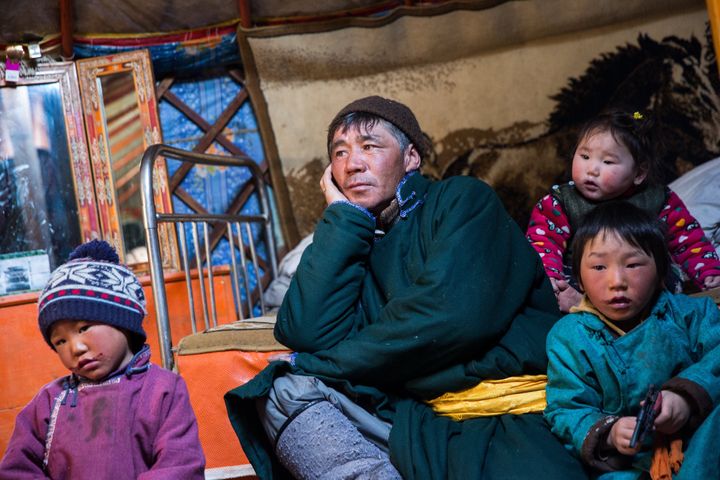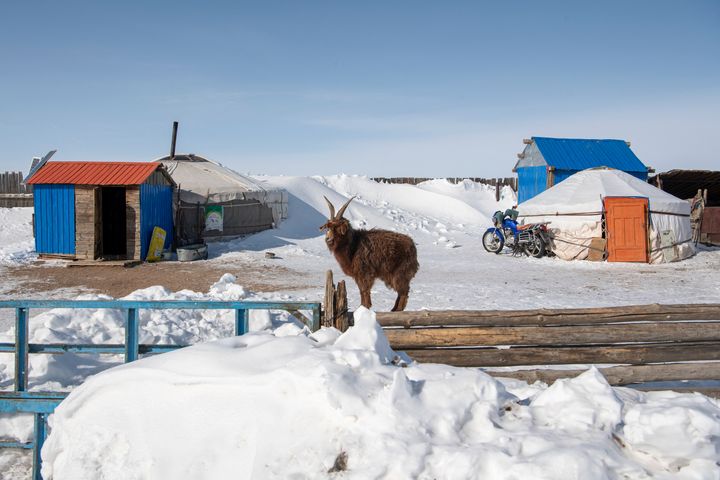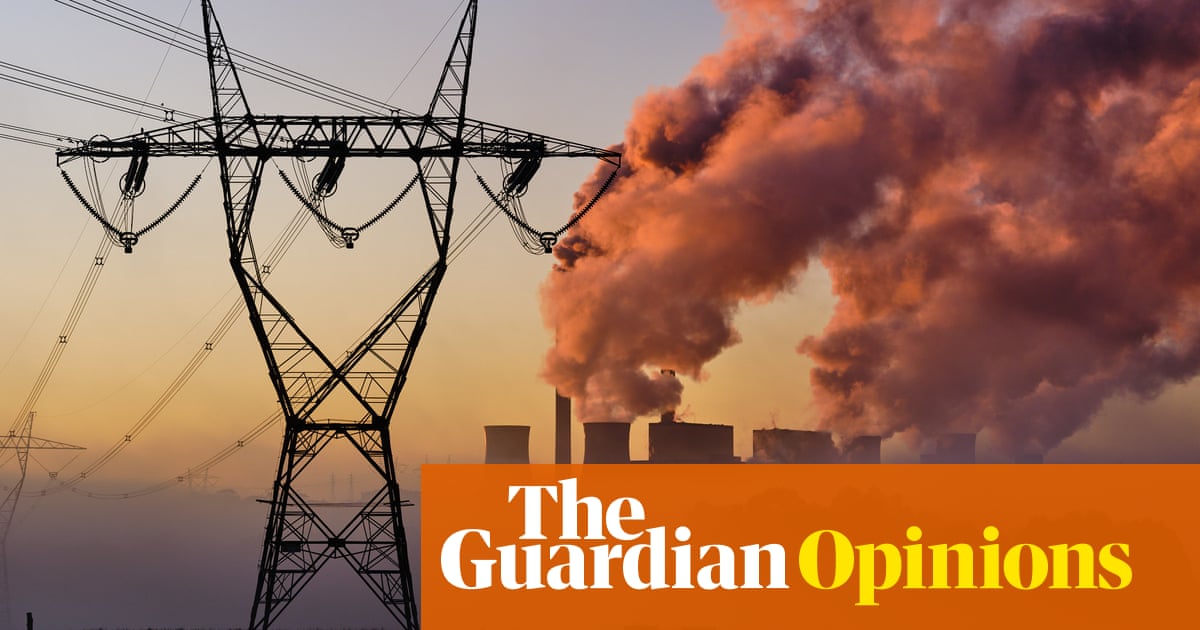You are using an out of date browser. It may not display this or other websites correctly.
You should upgrade or use an alternative browser.
You should upgrade or use an alternative browser.
Official Climate Change Thread
- Thread starter 88m3
- Start date
More options
Who Replied?ADevilYouKhow
Rhyme Reason
Disasters Forced 2.5 Million Americans From Their Homes Last Year
Many of those displaced also reported food shortages and predatory scams, according to new data from the Census Bureau.
Many of those displaced also reported food shortages and predatory scams, according to new data from the Census Bureau.
ADevilYouKhow
Rhyme Reason
ADevilYouKhow
Rhyme Reason
Blizzard in California's Sierra Nevada brings nonstop snow, dangerous conditions — NBC News
The season’s biggest snowstorm is affecting parts of Northern California and Nevada, causing power outages, freeway closures and avalanche warnings.
ADevilYouKhow
Rhyme Reason
NZA
LOL

The Worst Climate Disaster You Haven’t Heard Of Just Got More Deadly — And It’s Not Over Yet
When Mongolia’s extreme weather killed 700,000 livestock in 2018, it was a record. This year, that number is 5.2 million — and could soon quadruple.
The Worst Climate Disaster You Haven’t Heard Of Just Got More Deadly
When Mongolia’s extreme weather killed 700,000 livestock in 2018, it was a record. This year, that number is 5.2 million — and could soon quadruple.By Alexander C. Kaufman
Mar 26, 2024, 03:24 PM EDT
ERROR LOADING
In Mongolia, where nearly a third of the population still lives as nomadic herders, a winter so cold that livestock either freeze to death or starve as snow and ice make grazing impossible is called a “dzud.” These extreme seasons used to come once a decade. With climate change destabilizing the landlocked Asian country’s weather pattern, the dzud has haunted Mongolia for six of the last 10 years.
In 2018, when a dzud wiped out roughly 700,000 livestock, it was a devastating record. Last month, the death toll for this winter eclipsed 2 million, as HuffPost reported at the time. Weeks later, that figure has nearly tripled.
As of this week, at least 5.2 million animals have died since winter began, a particularly brutal event that combined the effects of two different types of dzud.
This is still just the start of the catastrophe, as the die-off is expected to reach its peak sometime in early May. The final death toll could reach 20 million, the United Nations told HuffPost on Tuesday.
It’s the worst winter in at least 50 years, according to the International Foundation of Red Cross and Red Crescent Societies, which warned last week that at least 75% of herding families were affected.

Davaadorj Duuji sits with his family in his home in a dzud-affected area in Darkhad Valley, Khovsgol province, Mongolia.
TAYLOR WEIDMAN VIA GETTY IMAGES
More than 7,000 families now lack enough food, and heavy snow has buried more than 1,000 households’ traditional ger homes, the round, white tents sometimes called “yurts” in English. At least 2,257 herder families have lost over 70% of their livestock — akin to complete financial ruin for nomads whose entire livelihoods in an increasingly capitalistic country are tied up animals.
On a recent trip to the countryside to deliver aid to stranded herders, Matilda Dimovska, the U.N. Development Program’s resident representative in Mongolia, said she saw newborn goats crying for food. But when the malnourished mother came in from the field, she could not produce enough milk to suckle all the kids.
“It’s a cycle with major implications for humans as well,” she said. “It’s devastating.”
The U.N. has raised $13.7 million in relief aid, mostly from neighboring countries like Japan, South Korea and China. So far, $4 million has been delivered. The U.N. Development Program kicked in $50,000 of its own funding, Dimovska said.

This picture, taken on Feb. 22, 2024, shows a goat standing next to a traditional ger tent amid extremely cold weather conditions in Bayanmunkh, in Mongolia's Khentii province.
BYAMBASUREN BYAMBA-OCHIR VIA GETTY IMAGES
The United States has increased its aid to Mongolia in recent years as Washington, D.C., seeks closer ties with the mineral-rich democracy sandwiched between Russia and China. Last year, Vice President Kamala Harris brokered a deal with Ulaanbaatar, the capital of Mongolia, to help develop mining of the rare earth metals needed to transition away from fossil fuels, over which Beijing has a near monopoly. The U.S. Agency for International Development offered Mongolia $13 million in aid last August.
As the extent of this year’s dzud became clear, the U.S. government pledged another $200,000 in assistance last month.
On March 4, the U.S. Embassy in Ulaanbaatar announced another $700,000 in aid.
“This second tranche of support is providing hay, veterinary supplies, and cash assistance to 2,700 herder households,” a USAID spokesperson told HuffPost. “USAID is also supporting efforts to clear blocked roads to ensure that the aid reaches those that need it.”
Mongolia is now bracing for an influx of internal refugees as nomads who lose much or all of their animals face financial decimation and migrate to Ulaanbaatar in search of work in construction or security.
Since herders’ homes are already mobile, nomads moving to the city typically find an open plot on the outskirts and hunker down. The permanent new homes don’t have running water or hookups to the electrical grid. Instead, the herders dig pit latrines that sometimes flood and spread raw sewage over densely populated urban neighborhoods and burn coal indoors. Combined with what spews from the smokestacks of the city’s coal-fired power plants, the resulting air pollution has rendered Ulaanbaatar the most dangerous capital in the world to breathe.
In October, when HuffPost visited Mongolia to report on the plight of nomads dealing with climate change, the country’s top climate official said a major priority was creating an early warning system that can deliver timely weather forecasts to people across a nation more than twice the size of Texas, with a population slightly larger than Houston.
Mongolia was still working to get “the right software, the right system,” and “the right computers, which are extremely sophisticated issues,” Dimovska said. The U.N. is helping fund those efforts through the Green Climate Fund, the pot of money set up in the 2015 Paris climate accord that helps poorer countries deal with the effects of global warming.
Despite its heavy coal use, Mongolia generates a fraction of 1% of global emissions each year.
“Humanitarian assistance has to be complemented with the building of longer-term capacity and resilience in this country,” Dimovska said. “For that, comprehensive policy is needed.”
Last edited:
ADevilYouKhow
Rhyme Reason
1/1
DUBAI RIGHT NOW
DUBAI UNDERWATER AND IS FLOODED
Biggest flood since 1999
To post tweets in this format, more info here: https://www.thecoli.com/threads/tips-and-tricks-for-posting-the-coli-megathread.984734/post-52211196
DUBAI RIGHT NOW
DUBAI UNDERWATER AND IS FLOODED
Biggest flood since 1999
To post tweets in this format, more info here: https://www.thecoli.com/threads/tips-and-tricks-for-posting-the-coli-megathread.984734/post-52211196
1/1
This is not Mumbai, this is Dubai.
60% of annual rainfall in Dubai already fell.
This is scary !!
To post tweets in this format, more info here: https://www.thecoli.com/threads/tips-and-tricks-for-posting-the-coli-megathread.984734/post-52211196
This is not Mumbai, this is Dubai.
60% of annual rainfall in Dubai already fell.
This is scary !!
To post tweets in this format, more info here: https://www.thecoli.com/threads/tips-and-tricks-for-posting-the-coli-megathread.984734/post-52211196

1/1
Scenes of current Dubai weather
To post tweets in this format, more info here: https://www.thecoli.com/threads/tips-and-tricks-for-posting-the-coli-megathread.984734/post-52211196
Scenes of current Dubai weather
To post tweets in this format, more info here: https://www.thecoli.com/threads/tips-and-tricks-for-posting-the-coli-megathread.984734/post-52211196

ADevilYouKhow
Rhyme Reason
ADevilYouKhow
Rhyme Reason
ADevilYouKhow
Rhyme Reason

‘Climate denial’ ad pulled from The Australian after regulator deems it ‘deceptive’ | Weekly Beast
Advertisement from IPA-linked Climate Study Group claimed fossil fuel use would not damage the environment. Plus: Janet Albrechtsen holds forth on the importance of not taking sides
ADevilYouKhow
Rhyme Reason

Big oil privately acknowledged efforts to downplay climate crisis, joint committee investigation finds
Internal documents revealed by committee show companies lobbied against climate laws they publicly claimed to support